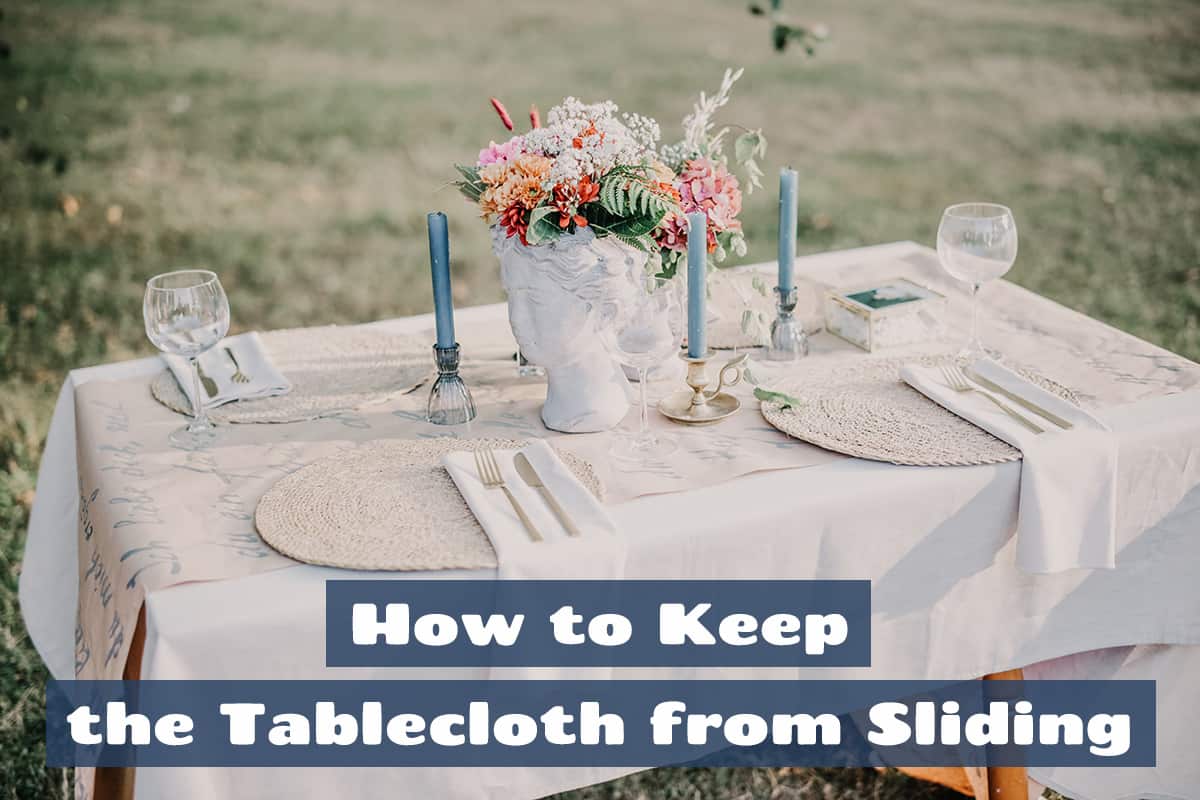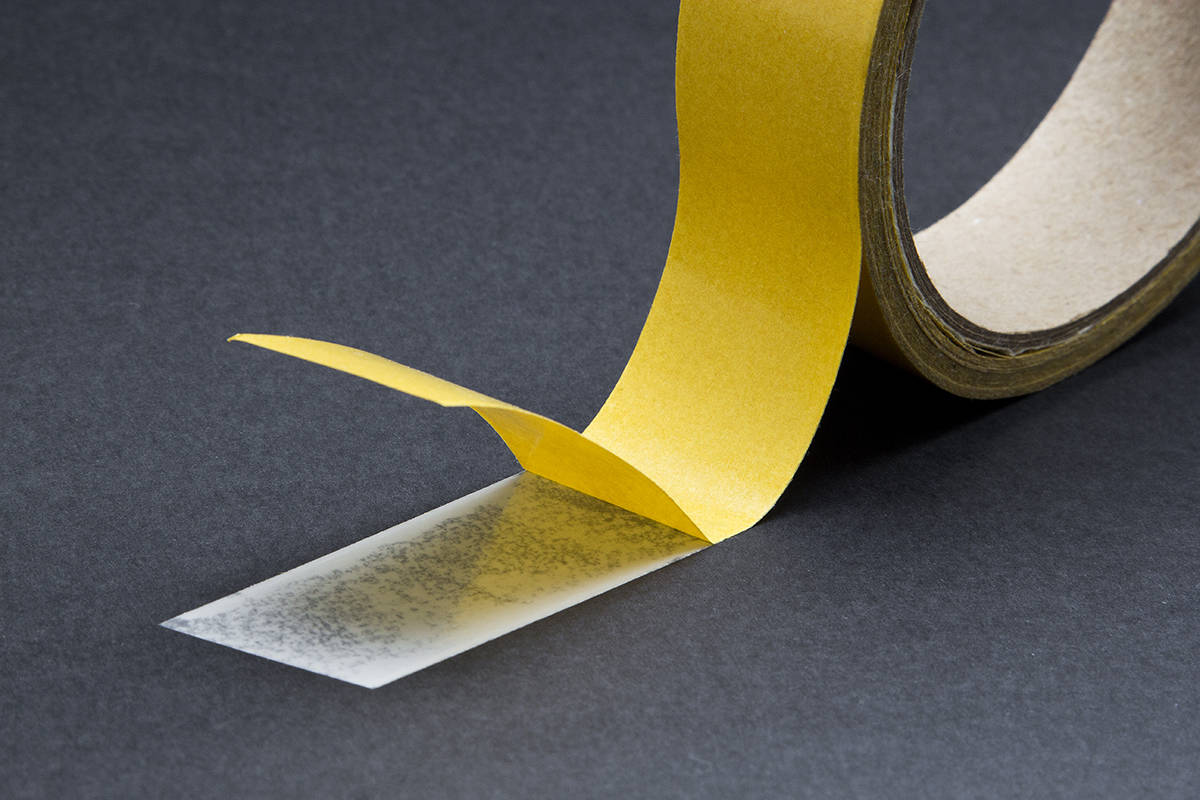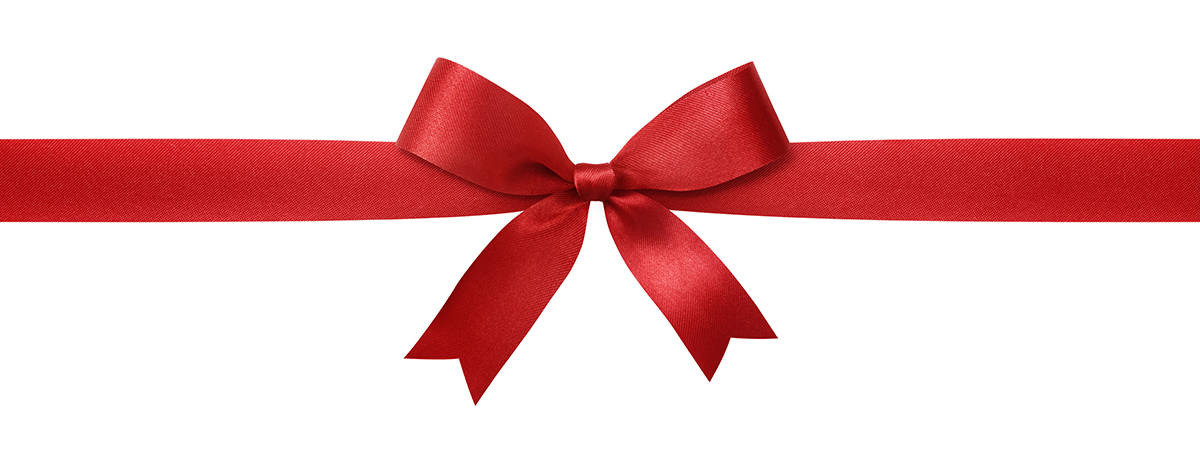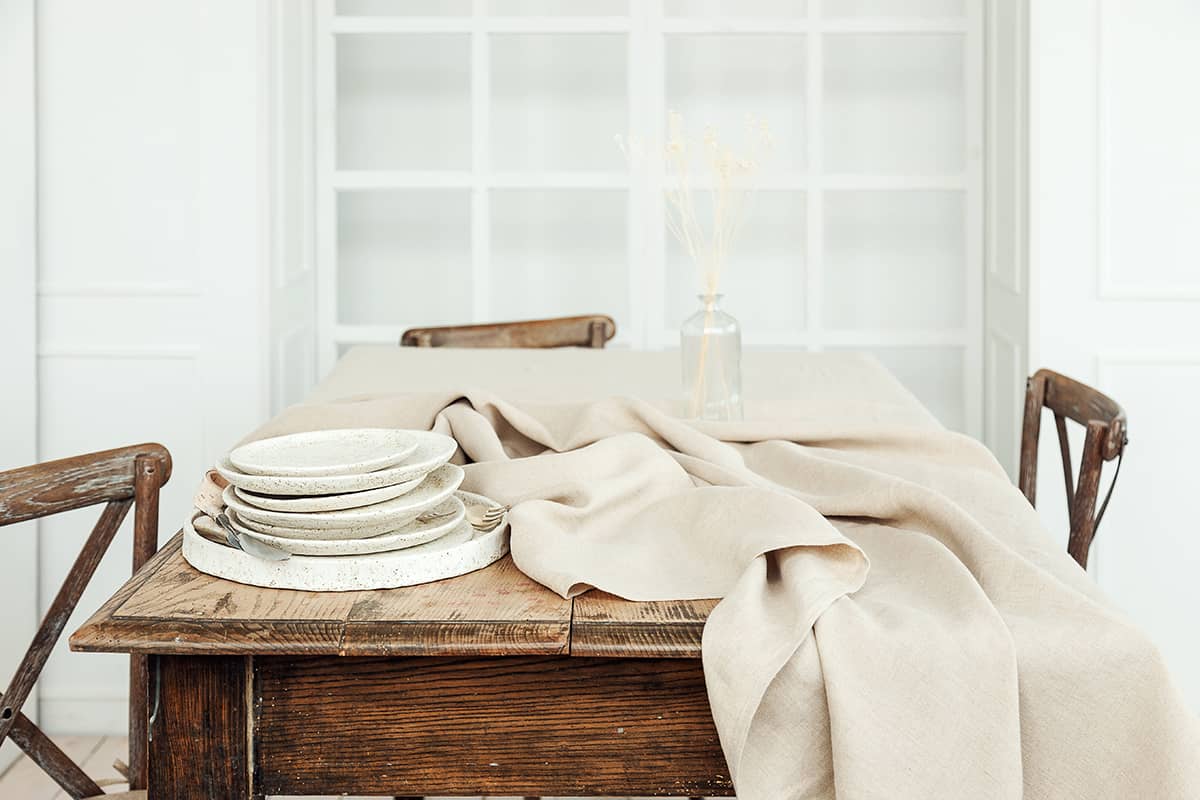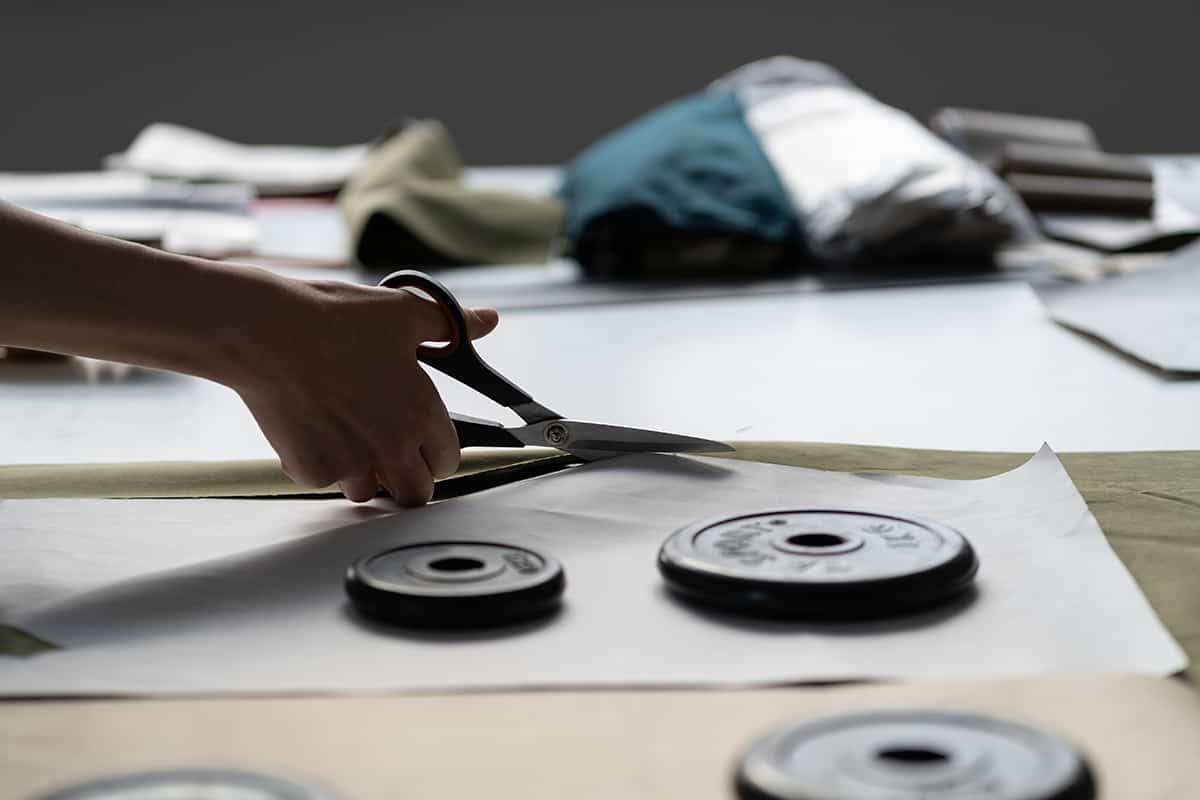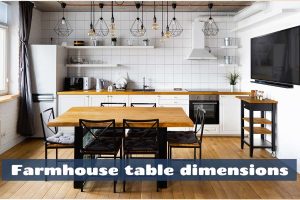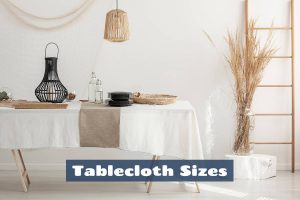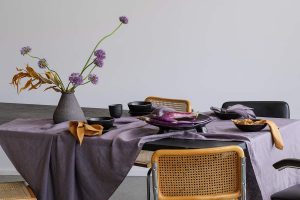Tablecloths are considered an essential addition to place settings in many homes and restaurants, but they can become quite frustrating if they don’t stay in place.
If you have a smooth and glossy table surface, then you have probably found that tablecloths have a tendency to slide out of place, but fortunately, there are a number of things you can do to prevent this from happening again. This article will look at a range of solutions to keep the tablecloth from sliding.
Table protectors
A table protector offers so many benefits, and one of these benefits is to stop the tablecloth from sliding. A table protector is usually made from dense foam, which is cut to size to match the exact dimensions of your tabletop. The table protector is laid on top of the table surface, and then the tablecloth is laid over the top of it to hide it.
The protector ensures that the table itself does not sustain any damage or wear and tear, such as scratches, water rings, or stains from spills. It will also protect the table from heat, so you don’t need to worry about putting down a hot pan or a hot drink on the surface of the dining table. Lastly, the table protector has an anti-slip surface on both sides.
This means it creates tension between itself and the table so that it stays in place, and it will also create tension between itself and the tablecloth to prevent the tablecloth from sliding around.
A table protector is among the best ways to stop a tablecloth from sliding, but it is also among the most expensive solutions. You can expect a table protector to cost around $20 to $30, depending on the size of your dining table and the quality of the protector.
Table weights
You can buy table weights to keep a tablecloth grounded and prevent it from slipping, but this is unnecessary since any heavy object can be used as a table weight. Consider a heavy ceramic vase as a centerpiece on your table to stop the tablecloth from moving, or create a centerpiece made from rocks collected from the beach.
If you don’t have a heavy object to use, water is actually very weighty, so fill a large glass with water and add a few fresh flowers from the garden to use as a centerpiece to help the tablecloth stop sliding. You could also think about using weights for each place setting, and these can double up as functional and decorative pieces.
For example, set a paperweight at each place along with a card displaying your guest’s name. It’s also worth remembering that plates and dinnerware dishes themselves are reasonably heavy, so if you keep your table set for a meal then your dinnerware should be able to keep your tablecloth in place.
Double-sided sticky tape
If you need a quick fix to keep your tablecloth from sliding, then double-sided sticky tape could be the solution. Many of us already have a roll of double-sided tape in the kitchen drawer or in the laundry room, so if you’ve got an upcoming dinner party and haven’t got time to go shopping for a table protector or table clips, then double-sided tape can be used in a pinch.
To use this, you just need to apply the tape to the edges of your table and then press the tablecloth into place to secure it on top of the tape. You will have varying levels of success with this method depending on the type of material your tablecloth is made from since some fabrics will adhere better to the tape than others.
Slick fabrics such as silk or satin will stick more effectively to the tape compared with rougher fabrics like linen or canvas. Bear in mind when using double-sided sticky tape to secure your tablecloth that it could potentially cause damage to your dining table. When you want to remove the tape, you could find that it leaves behind a sticky residue on your table, which is difficult to remove.
Table clips
Table clips are metal or plastic clips that can be secured to the edge of a table to keep a tablecloth in place. If you’ve eaten at an outdoor restaurant, you may have noticed table clips being used, as they are commonly chosen by restaurant owners to help prevent tablecloths from blowing away in the breeze.
Table clips are probably the least attractive option when it comes to solutions for keeping a tablecloth in place. They can cause indentation marks on your tablecloth or even on your table if they are secured tightly. They can also be seen very obviously, which puts many people off from using them.
If you do want to use table clips to secure your tablecloth, it’s a good idea to choose the clips in a color that matches your tablecloth. This will help to camouflage the clips and help them blend in with the tablecloth so they aren’t as easily seen. Table clips can work really well to stop a tablecloth from sliding, but they can also have a tendency to fall off.
Ribbon ties
You can use ribbons or lengths of cord to tie your tablecloth in various ways to stop it from moving. This option works well on round tables, especially if the tablecloth has a long drop. In this instance, take one long piece of decorative ribbon and tie it all the way around the sides of the table.
This will gather the sides of the tablecloth together and secure it in place. Tie the ribbon in a bow, adding decorative interest to the table while also creating a solution to a sliding tablecloth. For a square or rectangular table, use smaller pieces of ribbon to tie the corners of the tablecloth together.
This will help to stop the tablecloth from completely sliding off the table, but there will still be some movement on the surface of the table.
Heavy tablecloth
If you’re getting frustrated that your tablecloth keeps sliding off your table, it may just be that you need to use a different tablecloth.
Lightweight tablecloths are more prone to slipping and sliding because they have no weight holding them down. If you invest in a heavier tablecloth, such as one made from heavy cotton or linen, you may find that it isn’t as prone to slipping.
Sew-in weights
Since tablecloths are prone to slipping and sliding when they are lightweight, you can sew weights into the edges of your tablecloth to weigh them down. You can find weights in craft or haberdashery stores that are intended to be sewn into the bottoms of drapes. When used with curtains and drapes, they ensure good lines and stop the drapes from sticking out at awkward angles.
When sewn into the margins of a tablecloth, these weights will have a similar effect. The weights will drag the tablecloth down to help keep it from slipping off the surface of the table, but it will not entirely eliminate the chances of the tablecloth sliding. Be sure to sew the weights to the underside of the tablecloth so they can’t be seen from the outside.
